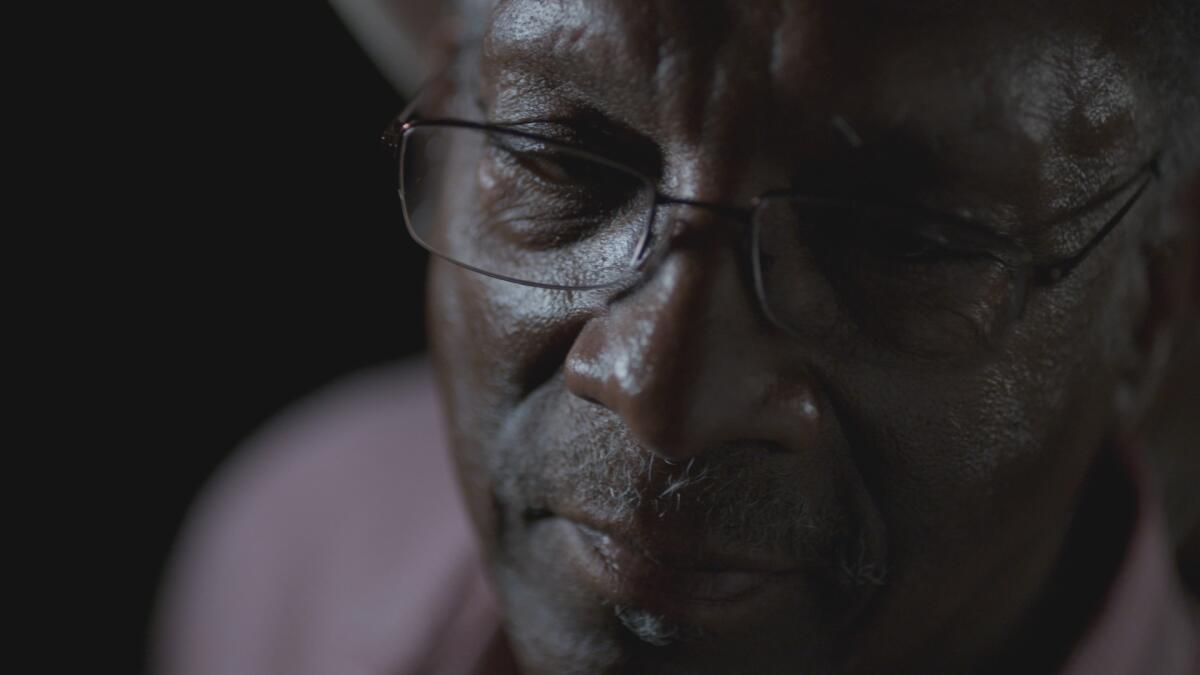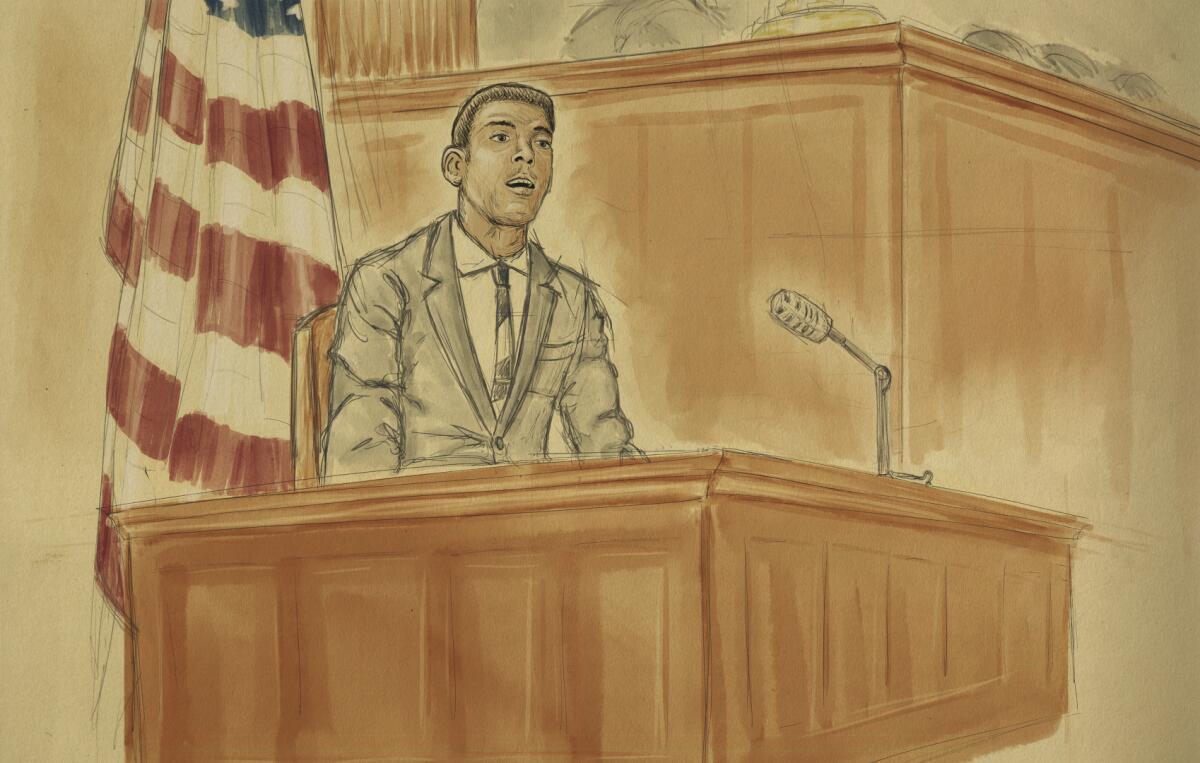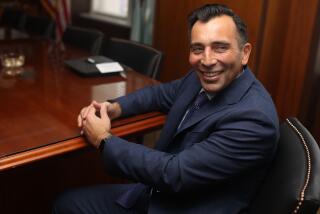Review: Simmering doc ‘A Crime on the Bayou’ illustrates the cyclical ills of systemic racism

The Times is committed to reviewing theatrical film releases during the COVID-19 pandemic. Because moviegoing carries risks during this time, we remind readers to follow health and safety guidelines as outlined by the Centers for Disease Control and Prevention and local health officials.
One of the first things we see in “A Crime on the Bayou” are tiny particles swirling in the green, murky bayou water. The camera slowly emerges from its submerged prison to skim just above the picturesque glimmer of the surface, whereby the water assumes a startling clarity. The landscape, blanketed by indistinct miles of mossy trees, gives way, fading to a tight frame of Gary Duncan. In 1966, in Plaquemines Parish, La., the then 19-year-old Duncan was accused by a white kid of assault. Duncan’s defense against the shocking accusation, assisted by Civil Rights attorney Richard Sobol, would further uncover the inherent inequities of the Jim Crow South.
Inspired by Matthew Van Meter’s nonfiction novel “Deep Delta Justice,” and the third film in director Nancy Buirski’s film trilogy exploring racial injustice — “The Loving Story” and “The Rape of Recy Taylor,” being the others — “A Crime on the Bayou” never explodes with fury. But that doesn’t mean you won’t feel enraged while taking in the maddening series of systematic wrongs committed against Sobol and Duncan.
The film concerns three cases: the primary being Duncan’s defense against the “the system of pretend law,” as attorney Armand Derfner calls it, controlled by Plaquemines Parish’s segregationist Dist. Atty. Leander Perez. The film explains how the teenage Duncan earned a living by trawling with his father by boat for fish and shrimp. While driving to the hospital to pick up his wife and newborn son, he happened across his cousin and nephew leaving their recently integrated public school. Trailing the young boys were a few white kids. Duncan stepped out of his car to try to defuse the situation, lightly touched the elbow of one white kid, and was later arrested after the boy’s father accused Duncan of slapping his son. First he was charged with cruelty to a juvenile. Then with assault and battery.
Through Duncan’s case, “A Crime on the Bayou” explains the arbitrary nature of the Southern totalitarian regime. Newsreel of Hurricane Betsy’s devastating aftermath in 1965, whereby African Americans wade through floodwaters, their homes submerged and their belongings floating away, not only draws eerie parallels to Hurricane Katrina in 2005. It illustrates the apathy shown by white folks toward the plight of Black people. “We didn’t have no rights,” says Duncan.
To fight the charges, Duncan enlisted the volunteer help of Sobel. A young attorney at the prestigious law firm of Arnold, Fortas and Porter, he was one of many advocates who traveled South through the Lawyers Constitutional Defense Committee (LCDC) to improve the legal defense of Black people against the region’s systematic prejudice. Buirski often melds together two Sobol interviews — one was filmed in 2011 when the practitioner was in better health and spoke with greater clarity — to recount his imperative role.
Sobol and Duncan teamed against Perez, a vicious despot with deep beliefs in racial pseudoscience, to demand Duncan’s rights be upheld and not take a plea deal. In a slew of telling clips, Perez is heard proclaiming, “We are not surrendering our schools.” In another he debates William F. Buckley, who incredulously snickers at Perez’s claim of Black people’s brains being biologically smaller. Sobol and others claim Duncan’s case was Perez reminding Black folks of their place. Courtroom sketches, set to the trial’s testimony, imbue the proceedings with a tactile reality. During the testimony of one white kid, for instance, he points toward Duncan and calls him “boy.”

Soundtracked by Chet Baker and Miles Davis’ easeful compositions, the film has a disarming gentle pacing. Likewise the archival work is simply stunning. The range of archival photos and footage captured by Plaquemines Parish residents demonstrating an exuberant Black New Orleans funeral procession or the bevvy of racist white protesters vividly transports us back in time. Anthony Ripoli’s absorbing editing is another highlight. His use of dissolves disintegrates how we define the past and the present by showing racism not as a linear activity but as a cyclical ill.
That circular pattern also matches the cases themselves. On top of Duncan’s legal battle, Buirski shoehorns Perez’s case against Sobol, accusing him of unlawfully practicing law by defending Duncan. A third trial sees Perez charging Duncan again with a crime. The legal battles allow Buirski to thread the partnership of Jewish people with Black folks, illustrating how World War II’s antisemitism made for natural allies. She further presents the challenge for African American attorneys, such as the powerhouse Black law firm of Collins, Douglas and Elie (both Collins’ and Elie’s sons provide vital interviews), to practice in the South. Their visceral stories recount the ever-present fear of death.
In plain terms, the “crime” in “A Crime on the Bayou” refers to the accusation of assault recorded in court documents. The actual crime is the racism committed against Duncan. Emotionally scarred and lighted by a blue hue akin to “Eve’s Bayou,” his pulsating memories unfurl under his staccato drawl to show how his hurt still lingers, like an old ache arriving again when it’s cold.
While choking back tears, for instance, he describes the moment the police arrived to arrest him for what felt like the millionth time. While Randy Newman’s “Louisiana 1927” ebbs in the background, Duncan describes in excruciating detail his wanting to commit suicide rather than return to jail. We discover why the caged bird sings, but Buirski asks what of the bird after its release?
Since their landmark trial, which reached the Supreme Court as Duncan vs. Louisiana (Buirski also includes incredible audio of those proceedings) and made access to trial by jury a right for state prosecutions, Duncan has become head of the Organized Seafood Assn. of Alabama and a family man. Not only did he and Sobol remain good friends until Sobol’s death in 2020, Buirski’s 90-minute film, “A Crime on the Bayou,” reminds us how Duncan and Sobol are pillars of courage.
'A Crime on the Bayou'
Not rated
Running time: 1 hour, 29 minutes
Playing: Lumiere Cinema at the Music Hall, Beverly Hills; Laemmle Playhouse 7, Pasadena
More to Read
Only good movies
Get the Indie Focus newsletter, Mark Olsen's weekly guide to the world of cinema.
You may occasionally receive promotional content from the Los Angeles Times.










